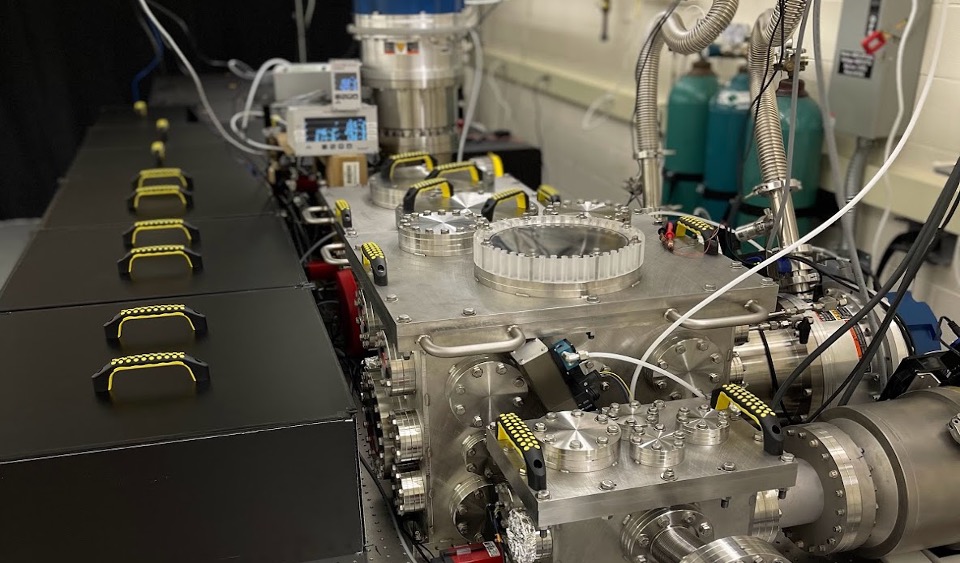The Department of Physics is part of a six-year, $18 million grant awarded to the University of Wisconsin–Madison’s Materials Research Science and Engineering Center (MRSEC) by the National Science Foundation. The award creates a National User Facility for X-FAST (XUV Femtosecond Absorption Spectroscopy Tabletop), a powerful XUV laser developed in the department.

MRSEC brings together 30 affiliated faculty from across nine departments to answer fundamental questions in materials science. The two interdisciplinary research groups (IRGs) funded by the award include one on stability in supercooled glasses and a second on magnetics in strained membranes. Physics professor Uwe Bergmann is a co-lead on IRG-2 along with materials science and engineering professor and physics affiliate faculty member Jason Kawasaki.
“The idea of our IRG is to make thin membranes of materials and then by straining them in various ways, changing their properties,” Bergmann says. “And our specific role is that we are in charge of x-ray and ultrafast characterization.”
The membranes being studied are 20-50 nanometer thin, crystalline materials. Kawasaki developed a way to produce very strong strains, up to 10%, which disrupt the perfect crystal lattice when applied. Once the atoms are pulled out of equilibrium by the strain, the energy levels change a little, the bonding changes, and exotic new phases are introduced. Bergmann is part of the IRG-2 team whose role is to perform ultrafast characterization of these changes. His team then informs the simulations group, whose theoretical calculations inform Kawasaki’s sample synthesis group.
“This is the typical circle between making the sample, finding out its properties, and understanding the properties — and then feeding it back to make new samples,” Bergmann says. “We’re trying to characterize these properties so that we can tailor them, so we can control them with light.”

Being able to control the materials’ properties with fast, electromagnetic light pulses could be a boon to faster, more efficient computing and telecommunications, an important potential application of this work.
Bergmann’s role in MRSEC stems from his expertise in ultrafast x-ray spectroscopy. Since joining the department of physics in 2020, his group has developed and built the XUV transient absorption high harmonic generation instrument that will be used to characterize the changes in properties as a result of intense strain on the materials following ultrafast excitations. As part of the new funding, the X-FAST instrument is now a National User Facility, which provides access to researchers across the country. In addition, the new award is funding an upgrade that includes the terahertz (microwave to infrared) range for sample excitation, a range that team member and physics affiliate professor Jun Xiao has developed.
In addition to the two research thrusts, MRSEC also runs a robust outreach and education program as part of the funding.
MRSEC is one of 21 NSF-funded centers that conduct fundamental materials research, education and outreach at the nation’s leading research institutions. Paul Voyles, professor of materials science and engineering professor at UW–Madison, is MRSEC’s director.